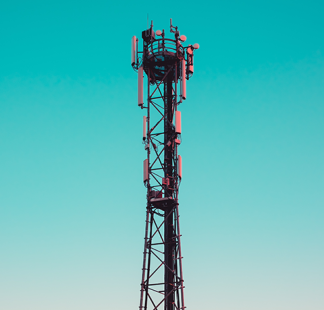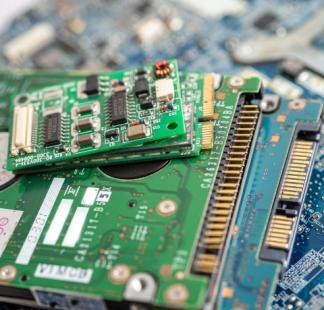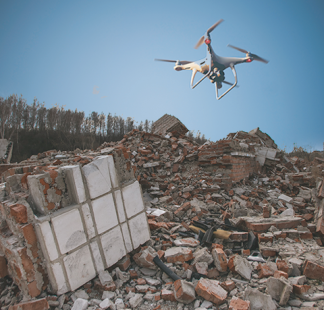- Jonathan Mwakijele
- Annitah Rodah Natwati
Intermediate
- Bank transfer
- Credit card
- M-pesa
Description
This course covers a comprehensive view of some of the most dynamically developing business areas of radiocommunications. The course aims at describing the technologies and their lines of development which are present in the World in the given field.
The independent course provides high-level technical knowledge.
This training is targeted at those who are entering the regulatory environment and are interacting with technologies such as operators, developers, or managers. It is targeted at those aiming to understand the workings of various technologies to develop a general overview of trends.
This may include professionals working in the telecommunications industry, lawyers, and regulatory staff across all departments.
Participants are expected to have completed basic knowledge in Spectrum Management. Participants are also expected to be working for a regulator, or in the ICT/Telecoms sector as a provider or consultant.
Upon completion of this course, participants will be able to:
- Define the technology principles of broadcasting-, mobile-, fixed-, satellite services and SRD applications.
- Identify the frequency bands used by these services, including why these bands are used for the given services.
- Identify the developmental trends of radiocommunications services and technologies.
- Discuss the conditions of implementation and operation of the presented services and also their business and regulatory environment.
- Describe the role of regulation for successful development of radiocommunications services.
- Interpret the provisions of ITU Radio Regulations in respect of specific radiocommunications services
- Use the international and national rules and specifications (e.g., National Frequency Allocation Table)
- Interpret essential business development criteria and trends
- Instructor-led online learning with presentations, case studies, exercises and assignments.
- Live lectures and discussions through ZOOM to be conducted every Monday and Wednesday from 1500 Hours to 1700 Hours EAT (GMT+3).
The evaluation is based on:
- Participation in all the four (4) Forums (20%)
- Quiz week 1 (10%)
- Quiz week 2 (10%)
- Quiz week 3 (10%)
- Quiz week 4 (10%)
- Written assignment (40%)
A total score higher than 70% is required to obtain the ITU certificate
WEEK 1
Regulation of the Fixed Services
- Fixed Point to Point (P-P) and point to MultiPoint (P-MP)
- Deployment, Performance, Distances and Applications
- System Parameters of digital Fixed and Broadband Wireless Systems
- Frequency Planning
- Link budget
- Interference, Mitigation techniques, Diversity & RF sharing with other services
Training activities details
Live Lecture through ZOOM: Monday and Wednesday.
Forum 1: Discuss the RF Interferences and the Mitigation Techniques.
Read Topic 1-course Materials and references.
Quiz 1: Friday
WEEK 2
Cellular Mobile Systems: Evolution from 1G to 4G and beyond
- Market trends in the field of mobile communication
- Evolution of Mobile Cellular Networks
- Overall principles of Spectrum Management for mobile systems
- Regulatory evolution of Spectrum Management for mobile systems
Training activities details
Live Lecture through ZOOM: Monday and Wednesday.
Forum 2: Trends in Fixed and Mobile services are moving from circuit-switched and Time Division Multiplexed (TDM) networks to the Internet Protocol (IP) based packet-switched Next Generation Networks (NGN).
What are the real steps being taken in your country toward deployment of the IP-based packet-switched NGN services in light of the existing circuit-switched fixed and mobile services?
Read Topic 2-course Materials and references.
Quiz 2: Friday
WEEK 3
Short Range Devices (SRDs)
- Regulation and Standardization
- Global and regional regulation of SRDs
- Case studies of global, regional & national ruling
- Three case studies of global, regional & national ruling (RLAN, WLAN, RFID)
Introduction of the Satellite Systems and Services
- Fixed-Satellite Service
- Mobile Satellite Service
- Other Satellite Services
- Satellite Link Budget
Training activities details
Live Lecture through ZOOM: Monday and Wednesday from.
Forum 3: What are the technologies used to mitigate harmful radio frequency interference from Short Range Devices and Satellite Services to licensed radio communications services?
What are the main technological advances in SRD and Satellite services?
Read Topic 3 and Topic 4-course Materials and references.
Quiz 3: Friday
WEEK 4
Radio and TV Broadcasting Services
- Introduction and Background of Radio and TV Broadcasting Services
- Development of ITU Regulations in respect of broadcasting services
- Spectrum usage for broadcasting services
- Broadcasting technologies
- Cutting-edge technologies, peep into the future
Training activities details
Live Lecture through ZOOM: Monday and Wednesday.
Forum 4: How Transition of Terrestrial Television Broadcasting from Analog to Digital meet the National Development Objectives of your country?
Read Topic 5-course Materials and references.
Quiz 4: Friday
Assignment:
One of the main reasons for the transition (migration) of terrestrial television broadcasting from analog to digital was to gain some Radio Frequency (RF) spectrum referred to as Digital Dividend and allocate it to the International Mobile Telecommunications (IMT) technology families such as Long-Term Evolution (LTE) for usage of broadband communications services.
Explain how your country utilized the Digital Dividend RF spectrum in terms of licensing methods and deployment of the IMT-related broadband communications networks and services.











